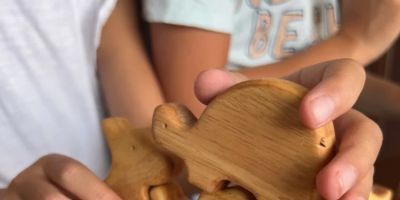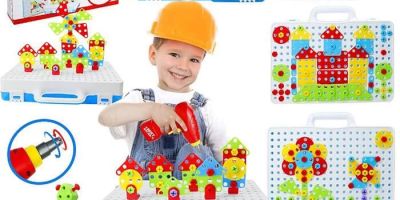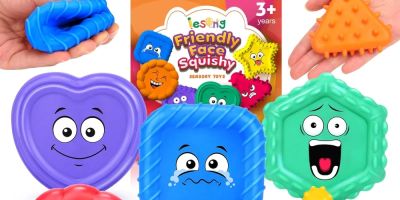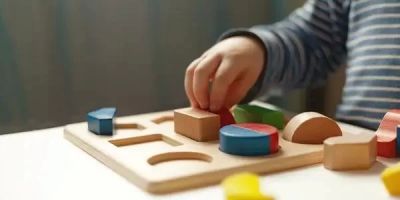- 1-importance-of-educational-play-for-child-development
- 2-integrating-learning-into-play-activities-effectively
- 3-creative-educational-play-ideas-for-various-ages
- 4-case-studies-and-real-examples-showcasing-successful-educational-play
- 5-practical-tips-for-parents-and-caregivers-to-enhance-playtime
- 6-resources-and-products-to-support-educational-play
1. Importance of Educational Play for Child Development
Playtime is more than just fun for children—it is a vital part of their overall development. Understanding how to make playtime more educational allows parents and caregivers to foster essential skills such as problem-solving, creativity, language development, and social interaction. Through play, children explore the world around them, test new ideas, and develop cognitive abilities in a natural and enjoyable way.
Educational play promotes curiosity and motivation, laying the foundation for lifelong learning. The balance between entertainment and education during play ensures that children remain engaged while acquiring new knowledge and abilities.
2. Integrating Learning into Play Activities Effectively
To enhance the educational value of playtime, it is important to thoughtfully integrate learning elements without compromising the fun. This requires a strategic approach that respects the child’s interests and developmental stage.
2.1 Choose Age-Appropriate Activities
Activities should align with the child's cognitive and motor skills. For toddlers, simple shape-sorting games or color matching can stimulate recognition skills, while older children might enjoy puzzles or science kits that challenge critical thinking.
2.2 Encourage Open-Ended Play
Providing toys and materials that allow children to explore in multiple ways encourages creativity and decision-making. For example, building blocks can be used to create anything from towers to imaginative scenes, promoting spatial awareness and storytelling.
2.3 Incorporate Educational Themes
Integrating themes such as numbers, letters, nature, or cultural stories into play helps reinforce academic concepts subtly. Storytelling games or role-play scenarios can introduce new vocabulary and social skills.
3. Creative Educational Play Ideas for Various Ages
Engaging children with diverse educational play ideas keeps their interest alive and nurtures different skill sets. Here are some inspiring examples:
3.1 Sensory Bins and Exploration
Creating sensory bins filled with rice, sand, or water alongside small objects can develop fine motor skills and scientific curiosity. Asking children to sort, count, or describe textures enhances language and math skills.
3.2 Interactive Storytime and Puppet Shows
Using puppets to act out stories encourages listening, comprehension, and expressive language. Children learn narrative structure and can even create their own tales, boosting imagination.
3.3 STEM-Based Building Kits
Building kits designed to teach principles of engineering and physics engage logical thinking and problem-solving. These hands-on activities foster patience and perseverance.
4. Case Studies and Real Examples Showcasing Successful Educational Play
Consider the story of the Martin family, who transformed their daily playtime by incorporating educational themes. By introducing a simple nature scavenger hunt, their children became more observant and curious about the environment, asking questions and learning about plants and animals first-hand.
Another example is a daycare center that integrated interactive math games into play routines. Over several months, children displayed marked improvements in number recognition and counting skills while having fun competing in friendly challenges.
These examples highlight how practical, thoughtfully designed play activities make education seamless and enjoyable.
5. Practical Tips for Parents and Caregivers to Enhance Playtime
To maximize educational benefits during play, consider the following:
5.1 Be an Engaged Play Partner
Participating actively and asking open-ended questions encourages children to think deeply and articulate their ideas. Instead of giving answers, guide them to discover solutions on their own.
5.2 Rotate Toys and Materials
Introducing new toys periodically prevents boredom and stimulates fresh learning experiences. Rotating educational toys keeps children excited and challenged.
5.3 Create a Stimulating Play Environment
Organizing a dedicated play area with accessible educational toys and books invites exploration. A cozy, well-lit space enhances focus and comfort.
6. Resources and Products to Support Educational Play
Choosing the right toys and tools can greatly impact the quality of educational playtime. Knight Toys offers a wide selection of carefully curated educational toys designed to promote learning and creativity. From STEM kits to language-building games, their products cater to different ages and developmental needs, making it easier for parents and educators to provide meaningful play experiences.
By investing in quality educational toys and integrating thoughtful strategies, you can transform playtime into a rich learning adventure that supports your child’s growth in engaging and fun ways.





